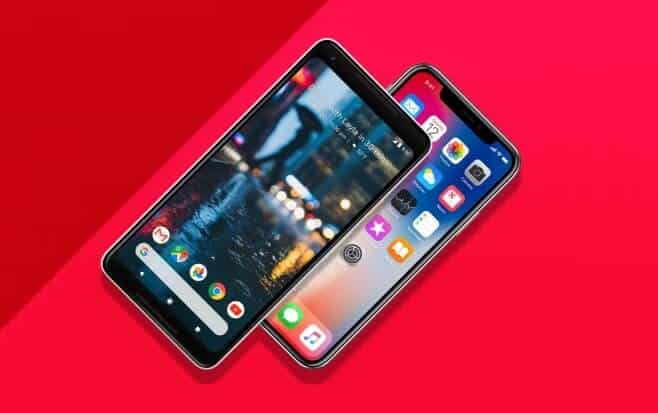Do you want to know what is Jailbreaking for iOS and Rooting for Android devices? Is there a difference between jailbreaking and rooting?
Jailbreaking and Rooting – You might have encountered these terms while looking up ways to tweak your phone, but what is the difference between these two?
Rooting and Jailbreaking devices both are the methods of breaking through the manufacturer-set limitations and altering your phone’s system.
So, if the purpose of jailbreak and root are so alike, why do people use the two different terms?
Basically, jailbreaking and rooting draw their main difference from their operating systems. Jailbreaking an Android is not possible, and neither is rooting an iOS device.

You “root” an Android device so that you can get to the root of its system, and similarly you “jail break” through an iOS system so that you can get past its restrictions.
Here’s a more detailed explanation of iOS Jailbreaking and Android Rooting:
iOS Jailbreaking
This criminal-sounding term actually has nothing to do with breaking out of jail. Not literally, anyway. Jailbreaking refers to the process of breaking through restrictions set by phone manufacturers.
An example of this is the iPhone, which is most probably one of the most restricted devices on the market today.
One of the greatest limitations of the iPhone is that it allows you to install only the devices that have been approved by Apple. This is where the Android gets its major edge, but Apple still has its matchless charms.
Apple restricts the apps that their users can install because they want to keep their clients running on safe and stable software. But, for those who want more control over their iPhones, jailbreaking is the only way to go.
Jailbreaking was once popular because of the limited variety of apps that could run on iOS. Apple took steps to address this “hack” through their successive OS updates. Today, there’s minimal need to jailbreak the phone unless you truly want to change how your iPhone works.
Jailbreaking your iPhone gives you administrative access, letting you control your device. When you jailbreak your phone, you gain access to the Cydia store, where there are numerous apps that you can install, that aren’t in the official App Store. You can also tweak the interface, and replace preset apps like Safari and Messages with alternative default applications.
One of the downsides of jailbreaking is on security because you’re allowing non-Apple-approved applications to run on your device. You’ll also stop receiving updates from Apple, and you’ll have to wait for another hack from the jailbreaking community so that you, too, can be “up to date”.
Rooting Android
On Android devices, manufacturers place certain limitations that don’t allow the user to access certain system files. Manufacturers do this on purpose to prevent their customers from causing unwanted damage to the overall performance of the phone.
Rooting lets the user gain “root access” to all of the device’s functions and features. Typically, rooting is performed on Android units, but other devices with operating systems such as Linux and Symbian also permit rooting.
Rooting is similar to gaining administrative access on a PC. On computers, once you get administrative access, you can grand certain permissions, alter files, and change up the operating system however you want. Rooting brings this convenience to your smartphone or tablet.
Whether you want to force your Android device to speed up with overclocking, download apps from all kinds of app stores, extend battery life, customize its themes, or configure its wireless tethering, jailbreaking is the one-step solution to giving you the opportunity to make your phone do more than what it was advertised to do.
Think of your phone as something that has always had special features, but couldn’t be unlocked because of the manufacturer’s rules.
The Similarity
Is rooting and jailbreaking the same thing?
To put it simply, jailbreaking is the iOS version of rooting, and rooting is the Android version of jailbreaking. The two are pretty similar, but it depends on which device you’re using. Another thing they’re similar to are the risks that come with jailbreaking and rooting.
Among the risks are your phone turning useless, your warranty voiding, and your security being unreliable. However, with proper unrooting and jailbreaking, it’s easy to avoid these risks.
Does everything seem clearer now? If you’re an iOS user, you should look for someone to jailbreak. If you’re an Android loyalist, you should find someone who knows how to root. Luckily, at safe-root.com, we have both of those experts.
Author’s Bio:
Mia Johnson is a copywriter at Safe Root. She runs the blog, writes how-to guides, and helps the readers find out what rooting and jailbreaking is. With over 100 articles, Mia could probably root Android devices on her own.
You may also be interested in checking out:
- Top 5 Best Root Apps to Root Android without PC
- Top 20 Best Root Apps for Rooted Android Phones
- How to Install GBA4iOS Emulator on iOS 9 Without Jailbreak
- How to Install ClockworkMod Recovery on a Rooted Android Phone
- How to Install Custom Recovery on any Android Device